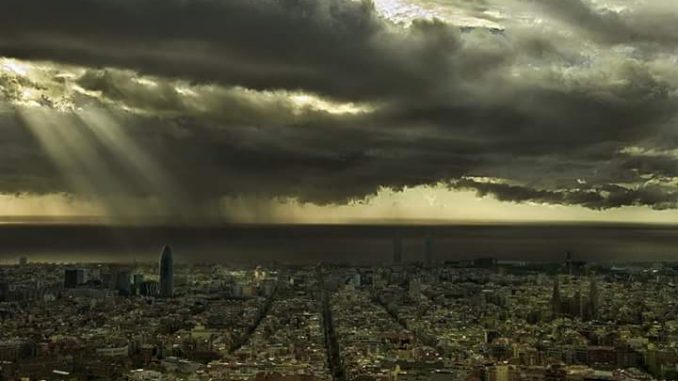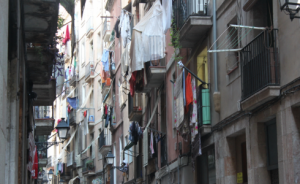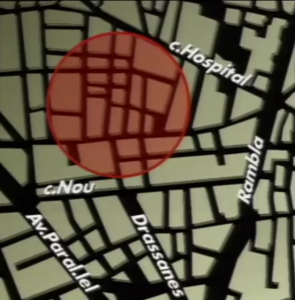
“The aim is not to heal a sick space, but to free it from its evil condition: to save it. Urban space must be regenerated, its vices turned into virtues, its inhabitants redeemed from sin. The real enemy is not disorder, chaos, or poverty; the real enemy is the devil itself” (Manuel Delgado, “Todas las ciudades están poseídas”)
There is an intimate link between cities and the devil. All cities were born to contrast the terror of the wilderness, the dangers of the wasteland, and they are built around an axis mundi that protects its inhabitants from evil. Inevitably, they all betrayed this task. Inside them, other forces proliferate, more perverse than those of the wilderness. The bustle of the city, its promiscuous and uncontrolled intermingling of bodies, ideas, and actions, cause a moral panic far more terrifying than the dangers of nature.
All the recurring calls to regenerate and renovate the city, or at least the more disturbing parts of it, are always calls to expel the devil. The words that are used for it – culture, order, law – are apotropaic, like psalms or mantras that are pronounced in order to contrast the Evil by evoking its opposite, a ‘Good’ as imaginary and dreamlike as the other. Urban renewal is an exorcism: it aims to chase the demons away, to kill the unwanted and uninvited ‘others’, to purify the body of the city, and to return it clean and renovated to its legitimate owners – those imaginary and neutral ‘subjects’ to whom public space is thought to belong.
No violence is too much, to achieve this task. Whoever tries to oppose the sacred duty to chase away the Evil one, will be considered as dangerous as those who defended the witches, the sabbas, or heresy.

- Manuel DELGADO “Todas las ciudades están poseidas“, preface to Miquel Fernández’s book Matar al chino (Virus, 2016), on the demolition of Barcelona’s neighborhood of Raval (“Barrio chino”).
- Video of Manuel Delgado’s conference “Todas las ciudades están poseídas” at the conference Ciudadanía y espacio público en la ciudad neoliberal in México DF, november 2017.
- This documentary shows perfectly the demoniac imaginary projected on Barcelona’s city center, and especially on the Raval: “El carrer de la Cera“, 30 minuts, TV3, 1996.
- Many anthropologists underlined the political aspects of spirit possession, since Jean Rouch’s great classic Les maîtres fous (1955). A more modern example: Leslie A. Sharp (1996), The Possessed and the Dispossessed, on spirit mediums in Madagascar.
Other cities, other demons:
- Chiara ZANASI (2016) Demoni e metropoli, Manifestolibri, on the christian exorcist father Amorth, active in Rome until few years ago. A presentation of the book by Stefano Portelli, in a conference in the University of Rome.
- Federica DI GIACOMO (2016) “Liberami“, documentary on the exorcist father Cataldo, active in Palermo. Here’s a critique to the movie by another exorcist, father Dermine.
- Andrew Alan JOHNSON (2014), Ghosts of the New City, University of Hawaii Press. Ghosts pentrated into the imaginary of the old buildings in Chiang Mai (Thailand); but the new urbanization are not free from evil either.
- Michael HERZFELD (2016), Siege of the Spirits: Community and Polity in Bangkok, University of Chicago Press. In Bangkok, however, residents of the ancient settlement of Pom Mahakan, under eviction, claim their right to stay, as the guardians of the shrines to the ancestors of the city. The spirits that protect the city would not agree with the demolition of the neighborhood.
- Ernesto DE MARTINO (2009 (1959)) Magic, A Theory From The South. HAU Books recently translated into English this classic of the great Italian ethnographer, whose original title was South and Magic. The complete text is available online! And here’s a review by Stefano Portelli in the Journal of the Royal Anthropological Institute, 2017 [PDF]. The book includes an extraordinary chapter on popular magic in Naples and on the ambivalence of Italian Enlightenment towards it. Another very important work is its posthumous book, incomplete: La fine del mondo (Einaudi, 1977).
